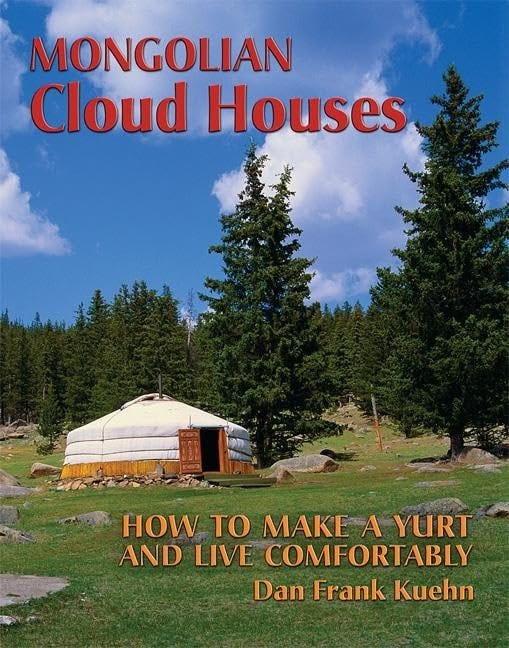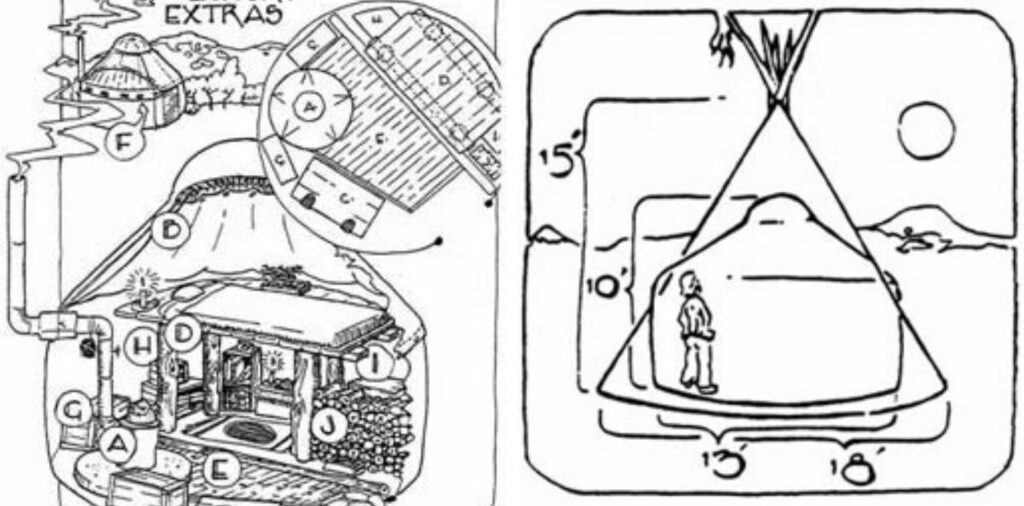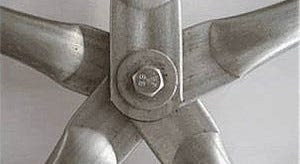Plants for a Future
Guide to edible & useful foliage
In the 1970s British bus driver Ken Fern went back to the land. Twenty-five years later he published the first edition of this now-revised compendium, a catalog and guide to a staggering number of mostly-perennial plants that can be harvested for food and other uses. Literally, thousands of seed, root, fruit, flower and leaf crops from a range of bulbs, trees, shrubs, climbers, bamboos, water plants and more. Beyond climatic needs and appearance, plants are described in terms of their taste and, often, highly-specific use (e.g. Asarum canadense. SNAKE ROOT: “a ginger substitute in flavouring cooked foods.”). The index is conveniently broken up into edible uses, like condiments and egg and salt substitutes, and non-edible uses, like basketry, disinfectant, and tooth care; For more, check out 100 Other Uses. And actually, the Plants for a Future web site offers a searchable database of 7,000 plants. While much of the info from the book is available online, the printed format can be easier to parse and digest. There are sections on “green manures” and how to mulch with cardboard boxes or newspaper and straw, as well as how to make a pond. Despite all the ideas and potential outlined in the book, the final chapter, “Future Possibilities,” truly emphasizes the magical allure of cultivation and experimentation.
09/12/08Excerpt
Neleumbo lutea. The AMERICAN WATER LOTUS grows in water up to 2 metres deep in the wild but in cool temperate zones is best in water no more than 60cm deep... The baked root is sweet and mealy, somewhat like a sweet potato, though it is usually cut up and steeped in one or two changes of water beforehand in order to remove any bitterness. the seed can be eaten raw or cooked, when half-ripe it is ground into a flour and used for making bread, thickening soups etc. or eaten dry. It does have a bitter embryo and this is often removed before the seed is eaten . An edible oil can be extracted from the seed whilst the leaves and young stems can be eaten cooked.
*
Winter Salads
One other use of a sunny wall is to provide shelter in the winter which will enable plants to continue in growth and thereby extend their harvesting season. In this case the ground should not be too dry, but it must be well drained...The extra protection of the wall is all that the plants will need to encourage earlier growth or to protect established growth. This is far easier than trying to grow lettuces and the like in greenhouses or frames and is also more productive since many of the plants will also provide fresh leaves at other times of the year. Many of the plants are also very attractive and not at all out of place in the flower garden. The ideal place for this garden is near the kitchen door so that on cold wet winter days you do not have to travel far to get your salad.
In addition to a sunny, sheltered site, there are a few other factors to take into account when growing a winter salad garden. The first is that the ground must be free-draining. Excess water at the roots will actually cause more problems for the plants than cold weather.
In order to ensure that the plants produce strong, hardy growth that will stand up to winter cold it is important to ensure that the ground is not too fertile. You do not want to encourage the soft, sappy growth that occurs in very rich soils. On the other hand, you do not want a poor soil since, although the plants will tend to be more cold tolerant, the leaves will be tougher and less freely produced. Therefore it is a matter of striking a balance. Feed the plants, but only in the spring and only with compost. Do not apply fertilizers, especially those rich in nitrogen. If the plant growth does not look vigorous enough in the summer then you can supplement the compost by giving the plants a liquid feed as described in Chapter 1.
When harvesting the leaves, it is especially important to take into account the plant's growth habit. Winter is a time when little new growth is made and so you cannot harvest the plants in the same way that is possible in the warmer months of the year. In general, this means harvesting just a few leaves form a plant at a time and allowing it to recover before picking again...
Allium species. Few salads are complete without an ONION to flavour them. The following species will enable you to harvest fresh leaves all through the winter.
A. neapolitanum. DAFFODIL GARLIC leaves are sweet with a delicate garlic flavour and are available from November to April. See also page 87.
A. schoenoprasum. CHIVES come into growth very early in the year and will provide pickings from late winter. See also page 88.
A. cepa 'Perutile'. The EVERLASTING ONION can be harvested all 12 months of the year. The leaves have a strong onion flavour and are used like spring onions. It is possible to cut off all the leaves of a plant (being careful not to damage the bulbs) at one time. New growth will be slow in the winter, but the plant will grow back satisfactorily. See also page 105.
A. fistulosum. The WELSH ONION has onion-flavoured leaves which are often available all year round and can be harvested like the verlasting onion above. See also page 106.
*
Most organic gardeners, when confronted by a heavily weed-infested site, will reach immediately for the fork or spade and spend many hours laboriously digging out as many weeds as they can. Not only is this exceedingly hard work, but it is often far less than successful. Many of the weeds, such as couch grass or thistles, will soon regrow with renewed vigour if even small parts of the roots are left in the ground. There will also usually be an explosion of germination from literally millions of seeds that have been given ideal germination conditions. The newly-dug ground will very soon be covered in weeds again.
The alternative, once more, is to mulch. But this time there must be some organic barrier placed below the mulch to prevent all the weeds from growing through. We have found that cardboard boxes are an ideal barrier to use. They are usually freely available in quantity from local shops, etc., will form an excellent barrier for a year or so, in which time most of the persistent weeds will have died, and then will rot down nicely to add their own organic matter to the fertility of the soil. Other materials that can also be used include newspapers (but try to avoid to many with colour printing and do not use colour supplements on land where you intend to grow food) and carpets (but only those made of natural materials such as hessian -- avoid foam-backed carpets).
It is very important to ensure that you apply a sufficient thickness of barrier mulch, otherwise the more vigorous weeds such as thistles and docks will push their way through it. A carpet that is not too worn is usually sufficient, carboard boxes folded flat but not opened out are generally enough, and newspapers about 15 sheets thick are also adequate. make sure that the edges of the boxes or whatever overlap by at least 8 cm, otherwise the weeds will soon find their way to the surface. Autumn and early winter is the ideal time to mulch weed-infested beds, though it can be done at any time of the year so long as as the soil is not dry.
(More info available from Plants for a Future, including lists of the best 143 plants for edibility and 54 for medicinal uses. -- SL — editors)
Plants for a Future: Edible & Useful Plants for a Healthier World Ken Pern 2000 (2nd edition), 300 pages $21











